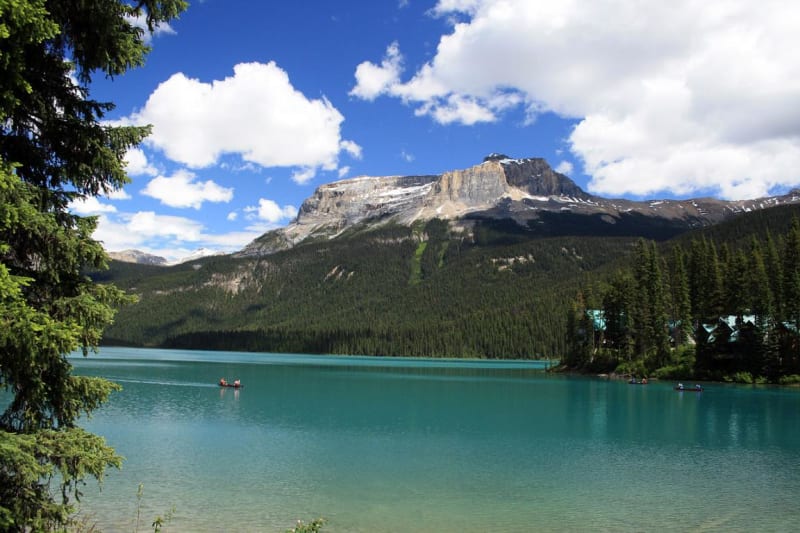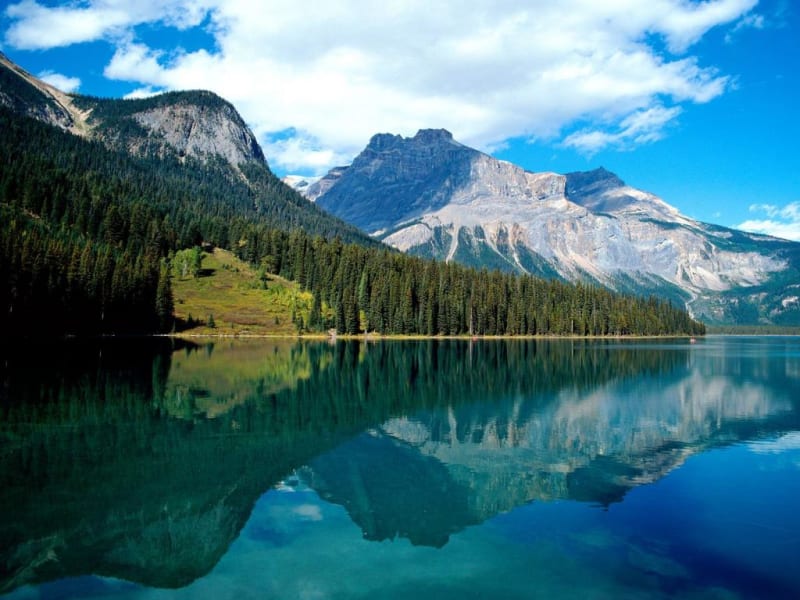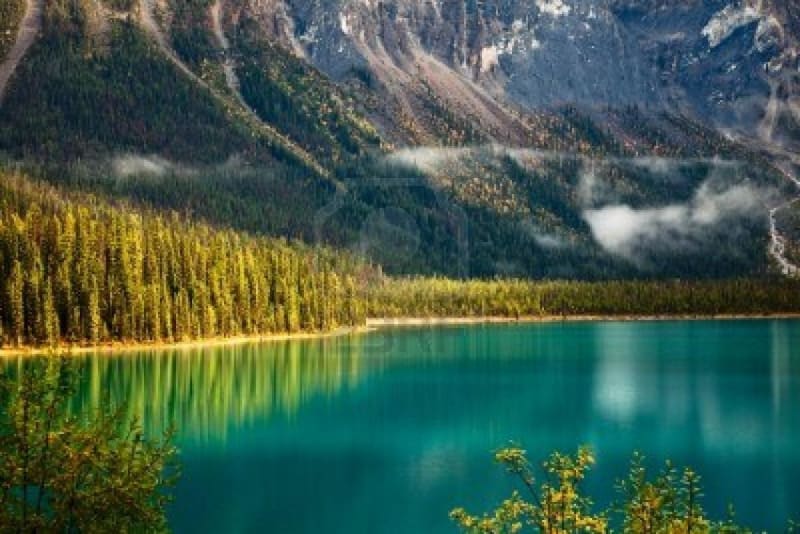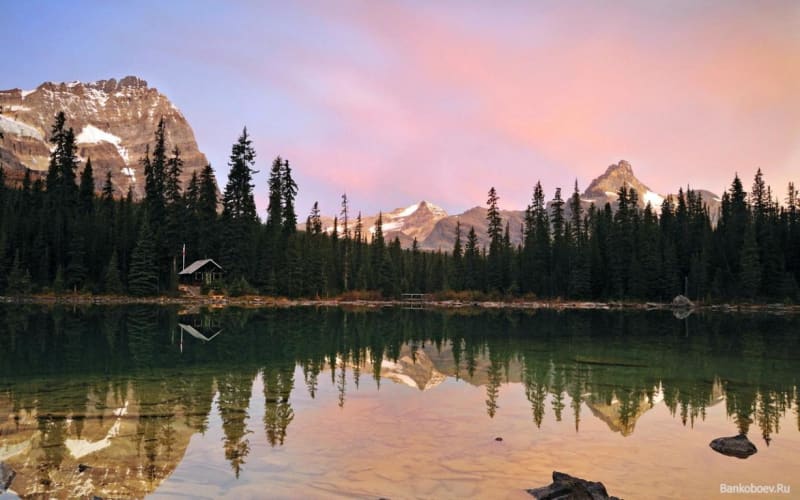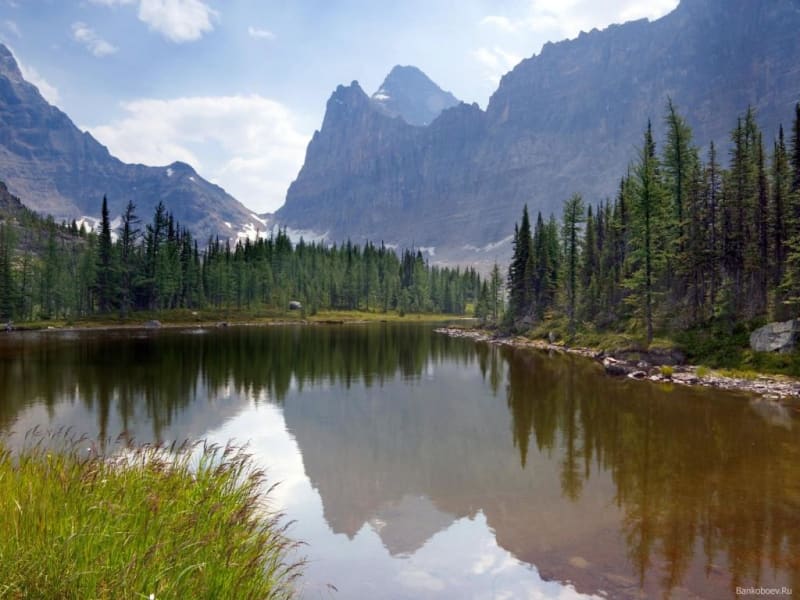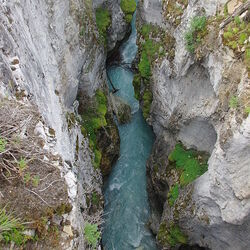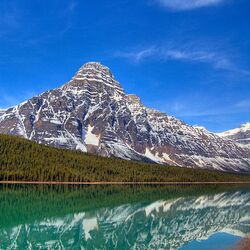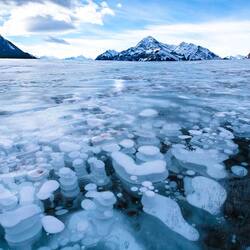Yoho National Park
Yoho is a Canadian national park, established back in 1886 in the Rocky Mountains on an area of 1,313 km2. The park is bordered by Banff National Park to the east and Kootenay National Park to the south. With these parks, as well as Jasper National Park and 3 other regional parks, it forms a World Heritage Site - the Parks of the Canadian Rockies.

Yoho National Park has absorbed all the best in Canada: the most picturesque landscapes, deep lakes. rushing rivers, high peaks with glaciers. The most notable attraction in the park is Takakkou Waterfall, and its name translates as "that's amazing." It is the second highest waterfall in the country. From its top point to the bottom is 384 meters, and it is fed by the meltwater of glaciers, so in winter the waterfall is almost invisible. In summer, Takakkou also appears in front of visitors in all its glory. Another attraction is the Kicking Horse River, which, to match its name, behaves playfully and unpredictably. The river carved a bridge out of a boulder, which used to be a waterfall, but over time the river sharpened the rock and went along a different channel. There is a stunning Emerald Lake nearby the river. The water in the lake really has a greenish sheen, and its serene surface reflects the majestic three-kilometer giant peaks of the Rocky Mountains.
The flora of Yoho Park is very rich, and you can easily meet deer and roe deer here. bears, coyotes, wapiti, mountain goats, and up to 200 species of birds live here.
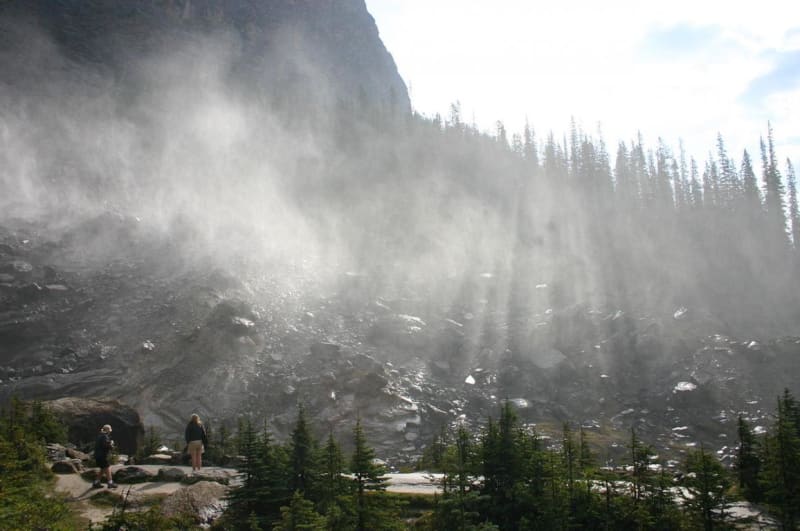
There are also karst caves and canyons in Yoho Park. There are even ancient animal fossils in places. Nature conservation is supervised by the park's management, whose office is located in the village of Field, and the park's tourist center is located there.
Due to the proximity of the central highway of Canada, many tourists come to Yoho Park. Among the objects of interest to them is an ancient village located between the mountains of Mount Field and Wapta, not far from the Field. You can only get here with a guide. This area was named Burgess Shale and is listed as a World Heritage Site. And for good reason, when there were 530 million people, the sea was lapping here, which left behind a lot of remains of marine animals: annelids, mollusks, sponges. In July and September, an exhibition of fossil marine organisms is held here.
